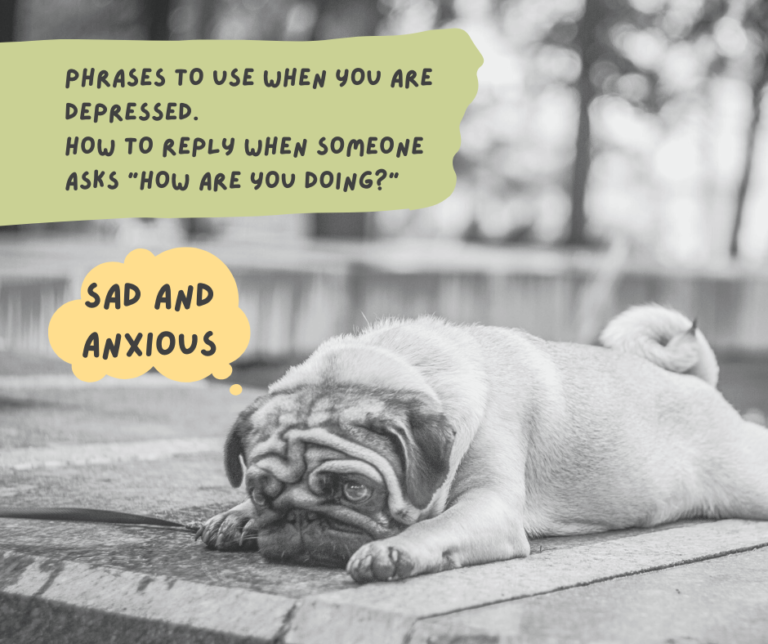Types of Sentences
What is a Sentence? = A sentence is generally a group of words that comes together to make sense or express an idea. A sentence consists of a subject and predicate. A new sentence begins with a capital letter and ends with an appropriate punctuation mark like a full-stop, question mark, or exclamation mark.
Types of Sentences =
- Functional Types of Sentences
- Structural Types of Sentences
Let’s start with the first one “Functional Type.”
Functional Types of Sentences
Functional types of sentences describe “What does a sentence do?” and “What is a use of sentence?” They also define the usage, activity, and behavior of sentences.
There are four types of Functional Sentences in English.
- Declarative Sentence
- Interrogative Sentence
- Imperative Sentence
- Exclamative Sentence
1. Declarative Sentence = It is a statement. This type of sentence declares something. A declarative sentence makes a statement, expresses opinion/feeling, and shares information. It always ends with a period or full stop.
Period or Full Stop = [ . ] This is a period or full stop.
e.g. –
- I love English.
- He is not in his room or balcony.
- They called the police, but the police did not come.
- She can come with us.
- We will not do fun there.
2. Interrogative Sentence = In this type of sentence, we interrogate something or someone. We ask questions in “Interrogative Sentence.” It always ends with a question mark.
Question Mark = [ ? ] This is a question mark.
e.g. –
- What are you doing?
- Is he still at home or in the park?
- Why will they not call us?
- Could I say something?
- Did she not surprise?
3. Imperative Sentence = This type of sentence gives a command, instruction, offer, suggestion, or makes a request. We start the sentences directly with a “Verb.” We do not use “Subject” because the subject is always “You” so, we hide the “You” from the sentence. It ends with a period or full stop but we use exclamation marks when we demand strongly or show emphasis in the sentence.
Period or Full Stop = [ . ] This is a period or full stop.
Exclamation Mark = [ ! ] This is an exclamation mark. It shows strong urgency to do than a full stop.
Note – We always use “Verb 1st form” in a positive sentence. In a negative sentence, we always use “Do not/Don’t.” An imperative sentence is always “Present Simple or Present Indefinite Tense.”
e.g. – We always use “You” as a subject in sentences so, we hide “You” in the “Imperative Sentence.”
- Do not move. (You do not move. = Now, it is a declarative sentence because it is just a statement.)
- Go home! (More forceful than “Go home.”)
- Sam, help us. (We can also use nouns but we separate them with comma.)
- Please stand up.
- Do not open the door! (More forceful than “Do not open the door.”)
4. Exclamative Sentence = It expresses emotions like surprise, excitement, happiness, anger, sadness, wonder, or sorrow, etc. An exclamatory sentence is a type of sentence that expresses strong emotion. When we speak, it is not hard to identify an exclamation sentence. The tone of the person’s voice will convey that information. But in writing, it always ends with an exclamation mark.
Exclamation Mark = [ ! ] This is an exclamation mark.
e.g. –
- What a beautiful day!
- Happy Birthday to you!
- She is such a bright student!
- He is so handsome!
- You need to keep quiet now!
Structural Types of Sentences
Structural types of sentences describe “The formation of a sentence,” “Physical nature of a sentence,” and “How the elements of a sentence are presented.” A structural sentence consists of one clause (Independent clause) or more than one clause (Independent and dependent clause).
Independent Clause = We also call it the “Main Clause.” An independent clause is a simple sentence. It itself can express a complete thought or idea about the sentence.
Dependent Clause = We also call it the “Subordinate Clause.” A dependent cannot form a sentence on its own. It itself cannot express a complete thought or idea about the sentence so, it is dependent on the main clause. A subordinate clause just gives extra information about the main clause.
There are four types of Structural Sentences in English.
- Simple Sentence
- Compound Sentence
- Complex Sentence
- Compound-Complex Sentence
1. Simple Sentence – A simple sentence only has one main/independent clause. An independent/main clause is a group of words that has both subject and verb which expresses a complete thought. There is no dependent/subordinate clause in a sentence.
Sentence Format: Purple = Subject Green = Verb Pink = Object Orange = Prepositional phrase.
e.g. –
- He ate all the food. (The sentence is completely understandable. It gives relevant information. It is Independent/Main Clause)
- I know. (The sentence is completely understandable. It gives relevant information. It is Independent/Main Clause)
- We are in the meeting. (The sentence is completely understandable. It gives relevant information. It is Independent/Main Clause)
- They will watch cartoons on the way home. (The sentence is completely understandable. It gives relevant information. It is Independent/Main Clause)
- She bought a t-shirt from a famous flea market. (The sentence is completely understandable. It gives relevant information. It is Independent/Main Clause)
2. Compound Sentence – A compound sentence has two or more independent/main clauses. These independent clauses are combined with a comma, semi-colon, and coordinative conjunction. There are no dependent/subordinate clauses in a compound sentence.
Each independent clauses are completely understandable. We can understand them individually but still, we combine them to make the sentence shorter and a little more advanced.
There are linkers that connect independent/main clauses together.
Comma = [ , ] This is a comma.
Semi-colon = [ ; ] This is a semi-colon.
List of Coordinative linkers = For, and, nor, but, or, yet, and so…
- FANBOYS
- F = For
- A = And
- N = Nor
- B = But
- O = Or
- Y = Yet
- S = So
Sentence Format: Purple = Coordinative Conjuction Green = Comma Pink = Semi-colon.
e.g. –
- She studies hard; she will pass the exam. (She studies hard + ; + She will pass the exam.) (Two independent clauses are combined together.)
- They were injured for climbing mountains. (They were injured + For + They were climbing mountains.) (Two independent clauses are combined together.)
- He is hungry, tired, and bored. (He is hungry + , + He is tired + And + He is bored.) (Three independent clauses are combined together.)
- We cannot repair nor can replace. (We cannot repair + Nor + We cannot replace.) (Two independent clauses are combined together.)
- I eat breakfast but no lunch. (I eat breakfast + But + I do not eat lunch.) (Two independent clauses are combined together.)
- She will call you or him. (She will call you + Or + She will call him.) (Two independent clauses are combined together.)
- They scored too much yet lost. (They scored too much + Yet + They lost.) (Two independent clauses are combined together.)
- He is studying, so he can pass the exam. (He is studying + So + He can pass the exam.) (Two independent clauses are combined together.)
- He likes her; however, she doesn’t like him. (He likes her + ; + However + , + She doesn’t like him.) (Two independent clauses are combined together.) (We can use “Conjunctive Adverbs” like however, then, & moreover, etc. but we put it between semi-colon and comma.)
3. Complex Sentence – A complex sentence has one main/independent clause and one or more subordinate/dependent clauses. A dependent clause starts with a subordinating conjunction or a relative pronoun. A dependent/subordinate clause has both subject and verb, but it does not express a complete thought.
The dependent clause doesn’t express complete meaning; we need an independent clause that expresses complete meaning. The dependent clause only shares extra information about the independent clause.
The Format of Complex Sentence = We use “Comma” when a sentence starts with “Subordinate Conjunction.”
- Subordinate Conjuction + Dependent clause + , + Independent Clause.
- Independent Clause + Subordinate Conjuction + Dependent clause.
List of Subordinate Conjunction = After, although, as, as long as, because, before, even if, how, if, in order to, in case, once, since, then, that, though, till, until, when, whenever, where, wherever, whether, while…
List of Relative Pronoun = that, which, who, whom, whose…
Sentence Format: Purple = Subordinate Conjuction/Relative Pronoun Green = Dependent Clause
Pink = Independent Clause
e.g. –
- I don’t know who kills Joseph.
- Before you ate it, I had saved it for me.
- He saw a tiger in front of his car while he was driving.
- Although she scored enough, did she still want to score more?
- I will buy a robot which can sing melodious songs.
4. Compound-Complex Sentence – It is a combination of Compound sentences and Complex sentences. A compound-complex sentence has at least two independent/main clauses and one or more dependent/subordinate clauses.
Sentence Format: Purple = Coordinative Conjunction or Comma or Semi-Colon Green = Dependent Clause
Pink = Independent Clause
Orange = Subordinate Conjunction or Relative Pronoun.
e.g. –
- Since the school is closed; she plays all day, but her mum works all day.
- He likes math, and I like English which helps me to make this website content.
- Greed never lets you happy, even though you make much money, and you always complain to want more since you can’t control your desires.
- I will not join the party, because I have some urgent work to do so, will you go there alone?
- We have three cars and he has no cars, still, he is richer than me.
Types of Sentences = You have seen all the examples. There are mostly full stops and question marks which denote that these types of sentences are connected to each other. You have seen in functional types of sentences that there are “Declarative and Interrogative” structures. Same like, you can see in structural types of sentences that there are also sign of “Functional Types of Sentences.”
Now use all these types of sentences to make your writing effective, vibrant, and advanced.
Thanks for choosing us!


